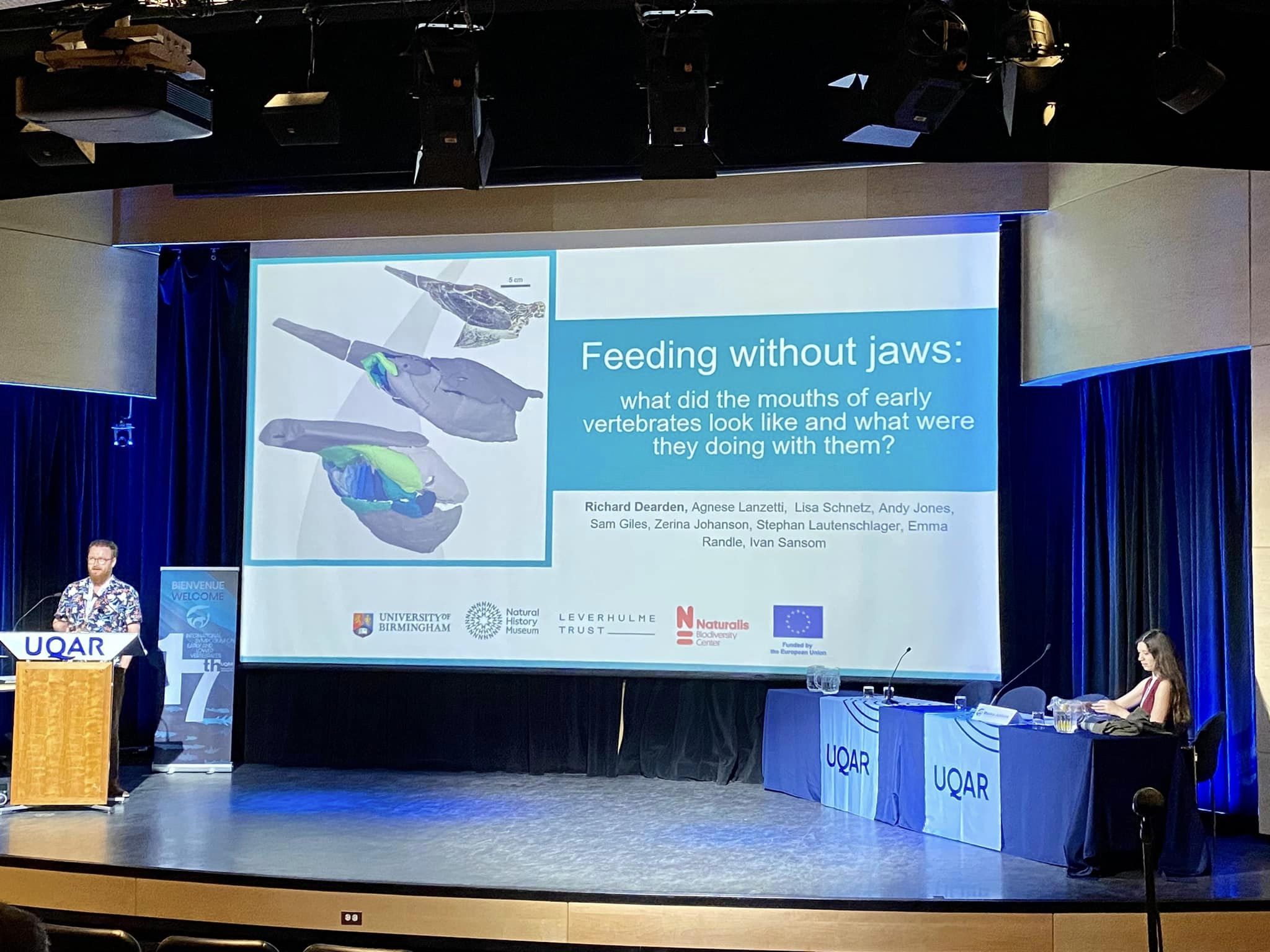I am interested in the early evolution of jawed vertebrates (gnathostomes), the group to which we humans belong, in particular the cartilaginous fishes or chondrichthyans (sharks, rays and chimaeras). I try to use the fossil record to understand the anatomy of ancient relatives of living gnathostomes, in particular using methods to visualise them three-dimensionally in the rock matrix.
At the moment my research focuses on the evolution of modern sharks and rays (elasmobranchs). Modern groups of elasmobranch seem to have originated in the Mesozoic: I am trying to combine information from the skeletons of extinct sharks from this period with information of the anatomy and genomes of living sharks to try and understand how and when living groups of shark evolved.
During my PhD I worked on an older episode in chondrichthyan evolution, studying the fossilised remains of acanthodians, some of the very earliest chondrichthyans which flourished during the Devonian. I continued this line of research during my first post-doc, in Paris, also becoming interested in early relatives of chimaeras from the Carboniferous.

Beyond sharks I also have an interest in the earliest jawed vertebrates. Rather counter-intuitively these animals lacked jaws, and during my postdoc in Birmingham I worked on how these animals fed, trying to understand the 3D anatomy of their feeding apparatus. In doing so we also discovered the oldest vertebrate neurocranium preserved three-dimensionally in the rock record, which was picked up in the media including CNN.
A unifying theme in my research into these areas is the use of computed tomographic (CT) methods to image difficult-to-visualise specimens. These methods use x-rays to allow scientists to non-destructively and three-dimensionally visualise the shape of fossils inside the rocky matrix. Usually, I use industrial CT scanners to do this, for example the facility in Life Sciences at the University of Bristol. However, I’ve also been lucky enough to get time on synchrotron scanners, such as the ESRF in Grenoble. I feed the data from this into phylogenetic and functional morphological approaches to try and understand what these ancient animals were and how they lived.